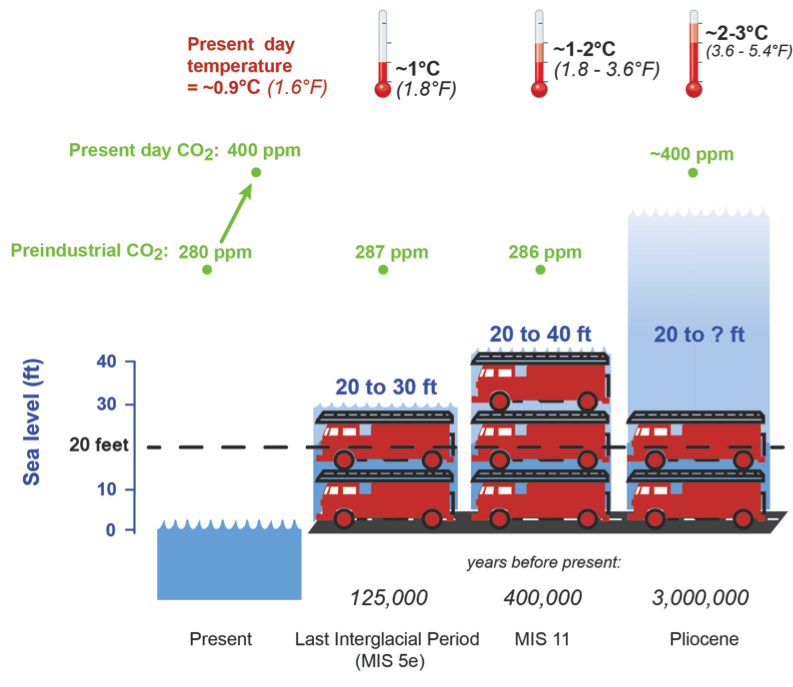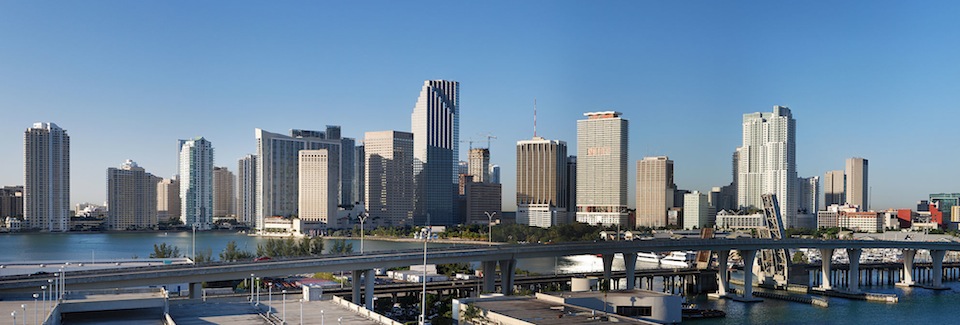
As the climate change debate remains at the forefront of the political realm, global mean temperatures continue to climb. Based on current global emissions, the global mean temperature is 4°C above preindustrial levels by the end of the century (2013 Intergovernmental Panel on Climate Change Fifth Assessment Report). Global leaders have agreed to try to limit global average temperature to less than 2°C above preindustrial levels. Dr. Andrea Dutton – Assistant Professor in the Department of Geological Sciences – asks: is it going to be enough? The answer for Miami and the rest of South Florida is likely to be no.
Dutton is a leader for an interdisciplinary team of climate scientists (PALSEA2) investigating past sea-level rise in response to several warming periods. The geological record of the Earth’s sea-level response to past warming, when global average temperatures were similar to or warmer than today, can be used to predict the Earth’s response to future warming. In a recent study published in Science, Dutton et al., assessed evidence of past sea levels using field-based reconstructions and models of sea level, climate, and ice sheets. Sea-level rise estimates were adjusted for regional geophysical influences such as isostatic readjustment and dynamic topography to estimate the true local sea-level rise at a variety of global localities. They found that during times when global mean temperatures were ~1 to 3°C warmer than preindustrial, sea level rose by at least 6m above present due to significant loss of ice from the polar ice sheets.
“During recent interglacial periods, global average temperatures were similar to today, but slightly higher polar temperatures, resulted in more than 6 meters of global average sea-level rise.” — Dr. Andrea Dutton
An interactive map of the impact of a 6m rise in sea-level on the US coastline indicates that cities on the eastern seaboard will disappear and south Florida will be completely submerged. The time scales of this rise is the most uncertain aspect of the predictions, but recent sea-level rises and increasing strength and frequency of storm are already affecting city infrastructure in Miami. In addition to the human impact, the Everglades National Park, a key wildlife refuge, is also under threat. Rare and endangered species are already suffering from the salinization of groundwater in their habitat. The destruction of this habitat will result in the displacement and devastating loss of wildlife. Dutton estimates that Miami and the rest of South Florida could be underwater in a matter of decades.

sea-level rise of 6 meters or more according to evidence from past warm periods
in Earth’s history. Temperatures shown are relative to preindustrial levels.
Present-day temperature is around 0.9°C higher than preindustrial levels.
This study was featured on numerous international media outlets, including UF News and Climate Central.
Resources
Science Article — “Sea-level rise due to polar ice-sheet mass loss during past warm periods.” Read more. Download PDF.
Zip-searchable interactive map of the U.S. showing land below 6m: Explore
Media Coverage
Washington Post — “Why the Earth’s past has scientists so worried about sea level rise.” Read more
Reuters — “Seas could rise 6 meters even if governments curb warming: study.” Read more
CBS News — “Climate change could lead to seas rising 20 feet.” Read more
Climate Central — “Sea level Could Rise At Least 20 Feet.” Read more
Climate Central — “Coast Nations, Megacities Face 20 Feet of Sea Rise.” Read more
UF News Article — “Evidence from past suggests climate trends could yield 20-foot sea-level rise.” Read more
Climate Progress — “Study: We’re Already In The ‘Worst Case Scenario’ For Sea Level Rise.” Read more
Phys.org — “Global sea levels have risen six meters or more with just slight global warming.” Read more
International Business Times — “Climate Change Could Trigger Sea-Level Rise Of 20 Feet Despite Attempts To Curb Emissions.” Read more
Downtown Miami Panorama by Matt H. Wade
